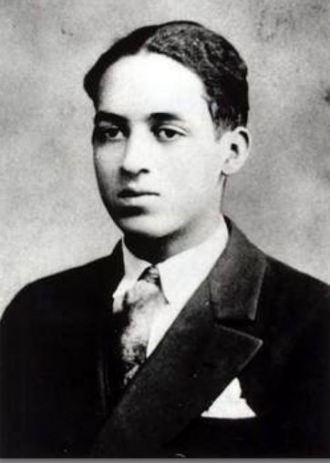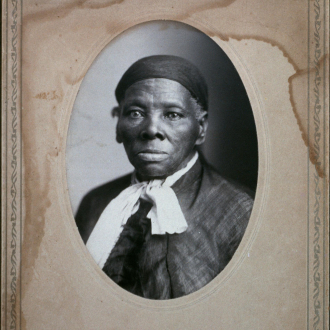Advertisement
Advertisement
Mary Scott
About me:
I worked for Exxon; USPS as a temp; Wonder Fabrics and Southwest Bell as Temp. I also worked for Locke Protective Services and American Security Officer's Academy almond with Allied Security Now Retired
About my family:
I have 2 Sons. Both are married with 2 Sons .
Interested in the last names:
I'm not following any families.
Updated: September 21, 2020
Message Mary Scott
Loading...one moment please


Recent Activity
Mary Scott
followed a photo
Sep 21, 2020 10:56 PM
Mary Scott
followed a bio
Sep 21, 2020 10:56 PM
Mary Scott
followed a bio
Sep 21, 2020 10:56 PM
Mary Scott
followed a photo
Sep 21, 2020 10:55 PM
Photos Added
Mary hasn't shared any photos yet.
Recent Comments
Mary hasn't made any comments yet
Mary's Followers
Be the first to follow Mary Scott and you'll be updated when they share memories. Click the to follow Mary.
Favorites
Loading...one moment please



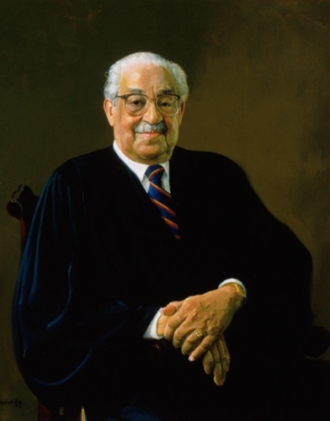
Thurgood Marshall (July 2, 1908 – January 24, 1993) was an American lawyer and civil rights activist who served as Associate Justice of the Supreme Court of the United States from October 1967 until October 1991. Marshall was the Court's first African-American justice. Prior to his judicial service, he successfully argued several cases before the Supreme Court, including Brown v. Board of Education.
Born in Baltimore, Maryland, Marshall graduated from the Howard University School of Law in 1933. He established a private legal practice in Baltimore before founding the NAACP Legal Defense and Educational Fund, where he served as executive director. In that position, he argued several cases before the Supreme Court, including Smith v. Allwright, Shelley v. Kraemer, and Brown v. Board of Education, the latter of which held that racial segregation in public education is a violation of the Equal Protection Clause.
In 1961, President John F. Kennedy appointed Marshall to the United States Court of Appeals for the Second Circuit. Four years later, President Lyndon B. Johnson appointed Marshall as the United States Solicitor General. In 1967, Johnson successfully nominated Marshall to succeed retiring Associate Justice Tom C. Clark. Marshall retired during the administration of President George H. W. Bush, and was succeeded by Clarence Thomas.

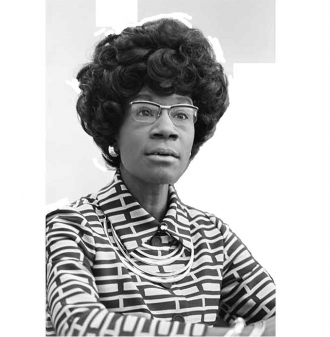
Shirley Anita St Hill was born on October 30, 1924 in Brooklyn, NY to parents Ruby and Charles St. Hill. She was of Barbadian and Guyanese descent, with both of her parents being immigrants from the Caribbean.
SHe grew up in a predominantly African American neighborhood in Brooklyn, New York and attended Brooklyn College, earning a Bachelor of Arts degree in sociology in 1946. She later pursued a Master's degree in elementary education at Columbia University, completing her studies in 1952.
She was an American politician, educator, and author. In 1968, she became the first black woman elected to the United States Congress, representing New York's 12th congressional district for seven terms from 1969 to 1983.
In the 1972 United States presidential election, she became the first black candidate for a major party's nomination for President of the United States, and the first woman to run for the Democratic Party's presidential nomination.
In 2015, Chisholm was posthumously awarded the Presidential Medal of Freedom.

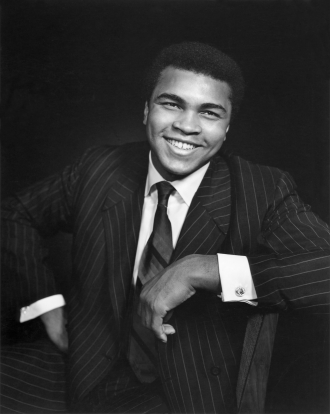
The Greatest is a 1977 biographical sports film about the life of boxer Muhammad Ali, in which Ali plays himself. It was directed by Tom Gries.[2] The film follows Ali's life from the 1960 Summer Olympics to his regaining the heavyweight crown from George Foreman in their famous "Rumble in the Jungle" fight in 1974. The footage of the boxing matches themselves are largely the actual footage from the time involved.
The film is based on the book The Greatest: My Own Story written by Muhammad Ali and Richard Durham and edited by Toni Morrison.[3]
The song "The Greatest Love of All" was written for this film by Michael Masser (music) and Linda Creed, (lyrics) and sung by George Benson; it was later covered by Whitney Houston.
Cassius was quick, dedicated and gifted at publicizing a youth boxing show, “Tomorrow’s Champions,” on local television. He was soon its star.
For all his ambition and willingness to work hard, education — public and segregated — eluded him. The only subjects in which he received satisfactory grades were art and gym, his high school reported years later. Already an amateur boxing champion, he graduated 376th in a class of 391. He was never taught to read properly; years later he confided that he had never read a book, neither the ones on which he collaborated nor even the Quran, although he said he had reread certain passages dozens of times. He memorized his poems and speeches, laboriously printing them out over and over.
Muhammad Ali’s Words Stung Like a Bee, Too
Outside the boxing ring, Ali fought his battles with his mouth.
In boxing he found boundaries, discipline and stable guidance. Martin, who was white, trained him for six years, although historical revisionism later gave more credit to Fred Stoner, a black trainer in the Smoketown neighborhood. It was Martin who persuaded Clay to “gamble your life” and go to Rome with the 1960 Olympic team despite his almost pathological fear of flying.
Clay won the Olympic light-heavyweight title and came home a professional contender. In Rome, Clay was everything the sports diplomats could have hoped for — a handsome, charismatic and black glad-hander. When a Russian reporter asked him about racial prejudice, Clay ordered him to “tell your readers we got qualified people working on that, and I’m not worried about the outcome.”
Rise of Muhammad Ali
Milestones and career highlights of Ali, a showman in and outside of the boxing ring.
Of course, after the Rome Games, few journalists followed Clay home to Louisville, where he was publicly referred to as “the Olympic n*****” and denied service at many downtown restaurants. After one such rejection, the story goes, he hurled his gold medal into the Ohio River. But Clay, and later Ali, gave different accounts of that act, and according to Thomas Hauser, author of the oral history “Muhammad Ali: His Life and Times,” Clay had simply lost the medal.
Clay turned professional by signing a six-year contract with 11 local white millionaires. (“They got the complexions and connections to give me good directions,” he said.) The so-called Louisville Sponsoring Group supported him while he was groomed by Angelo Dundee, a top trainer, in Miami.
At a mosque there, Clay was introduced to the Nation of Islam, known to the news media as “Black Muslims.” Elijah Muhammad, the group’s leader, taught that white people were devils genetically created by an evil scientist. On Allah’s chosen day of retribution, the Mother of Planes would bomb all but the righteous, and the righteous would be spirited away.
Years later, after leaving the group and converting to orthodox Islam, Ali gave the Nation of Islam credit for offering African-Americans a black-is-beautiful message at a time of low self-esteem and persecution. “Color doesn’t make a man a devil,” he said. “It’s the heart and soul and mind that count.

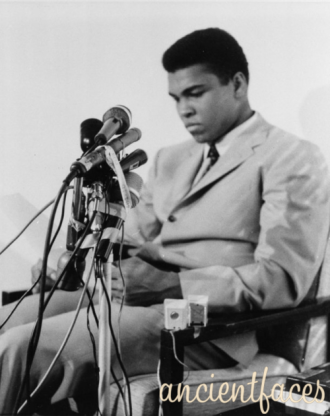
Muhammad Ali vs the Supreme Court
"Float like a butterfly, sting like a bee." Muhammad Ali certainly did when he took on the U.S. Supreme Court in 1971.
Muhammad Ali, born Cassius Marcellus Clay, Jr. on January 17th, 1942 is one of the most famous professional boxers of all time. Cassius Clay changed his name to Muhammad Ali after joining the Nation of Islam in 1964. In 1967, just a few years after the boxer won the World Heavyweight Championship, he refused to be drafted into the U.S. military, based on his religious beliefs and opposition to the Vietnam War.
Muhammad Ali, born Cassius Marcellus Clay, Jr. on January 17th, 1942 is one of the most famous professional boxers of all time. Cassius Clay changed his name to Muhammad Ali after joining the Nation of Islam in 1964. In 1967, just a few years after the boxer won the World Heavyweight Championship, he refused to be drafted into the U.S. military, based on his religious beliefs and opposition to the Vietnam War.
People tagged:

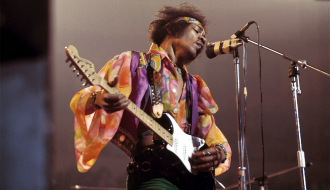
OCTOBER 15, 1970 3:10PM ET
LONDON — Jimi Hendrix is dead at age 27.
The exact nature of the death is still vague, and a coroner’s inquest is to be held in London September 30th. Police, however, say it was a drug overdose. They say he took nine sleeping pills and died of suffocation through vomit.
According to Eric Burdon [The Animals, War], Hendrix left behind for the girlfriend in whose apartment he died what Burdon called a “suicide note” which was a poem several pages in length. The poem is now in the possession of Burdon, the last musician with whom Hendrix played before he died.
Said Burdon: “The poem just says the things Hendrix has always been saying, but to which nobody ever listened. It was a note of goodbye and a note of hello. I don’t think Jimi committed suicide in the conventional way. He just decided to exit when he wanted to.”
“I’ve been going through a whole stack of papers, poems and songs that Jimi had written, and I could show you 20 of them that could be interpreted as a suicide note,” he continued. He went off stage and came back, playing the background to ‘Tobacco Road.'” That song was his last. Hendrix had been for some time attempting to become more independent in his business affairs. He saw Electric Lady as a step toward that goal. Burdon says that a week before Hendrix died, Jimi told him he was going to get new management.
“The few good things Jimi got, he really deserved. Even more things, as far as I’m concerned. When I left the Band of Gypsys, I know Jimi was extremely unhappy,”
“Both he and I felt that the three-way function of manager – artist – agent was quite likely to fall apart, because the times are different than they once were in show business. People outside the circle mistook this for discontent, but it wasn’t, because Jimi was intelligent and bright enough. If he wanted to split, he would have split.
“He realized that the only way he could get what he wanted, helping the Panthers, and setting up an anti-ghetto project in Harlem, was to die and hope that someone else would take care of the business for him using the things that he left behind, his music and his last poem, to make the money,” stated Burdon.
Jimi’s affairs were in a state of confusion at the time. At one point his road manager, Jerry Stickles, said that the day Hendrix died, he (Stickles) had called Dick Katz, his European agent, to tell him that Jimi wanted to do another European tour and a British tour as soon as possible. Katz lined up a German tour and some British dates that day before he heard the news, according to Stickles.
At another point, however, Stickles said that at Jimi’s request he made airline reservations to return to the States September 21st, because Jimi wanted to finish up some recording for a new album by the Experience. (All that needed to be done on that album was the mastering, which Hendrix was going to do himself at Electric Lady.)
None of Jimi’s friends or associates except Burdon, at first, would discuss the matter, and in the absence of a complete report, the London press chose to carry instead pure sensationalism. One Sunday paper had an “exclusive story” by a groupie which told of five-in-a-bed orgies with Hendrix.
In America, the first report – spread across the country primarily by FM radio within hours after his death – was that Hendrix had died of a heroin overdose. American newspapers generally carried the story of his death on the front page Friday afternoon and Saturday morning.
September 26th, Radio Geronimo in England played unreleased Hendrix material the entire evening, including a tape of Jimi with Buddy Miles and the Last Poets, and another unreleased live album.
The funeral was to have been Monday, September 28th, in Jimi’s hometown of Seattle, Washington.
James Marshall Hendrix was born November 27th, 1945. On the day of his death, his father, James, a landscape architect, talked about his son’s childhood. The Hendrix family lives in a simple house with lawn and garden in the better part of Seattle’s black neighborhood, near Lake Washington. The mantel is covered with pictures, guitar straps, magazine clips and other evidence of Jimi’s illustrious career. Mr. Hendrix has remarried, and has two daughters by that second marriage. He also has a 22-year-old son, Leon, by the first marriage.
The last time the family saw Jimi was on July 26th, the day after Leon began doing time for grand larcency. As always when he was in Seattle, Jimi stayed at the Hendrix house that weekend.
Mr. Hendrix recalled that Jimi first became interested in music when he was 10 years old. His father remembers going into Jimi’s room one night in the dark and tripping over a broom. He asked Jimi why the broom was there, since he obviously wasn’t using it to clean up his room.
“That’s my guitar, Dad,” Jimi had answered. “I’m learning how to play it.”
When he was 11, his father bought him a cheap acoustic guitar, and at 12, Jimi got his first electric guitar. He learned quickly, and was playing in bands at 13. When he was 14, that first electric guitar (inscribed “Jimmy”) was stolen, and he was unable to replace it until his sophomore year at Garfield High.
Members of Jimi’s bands were quite surprised when he became a star, because he seemed the least likely person in any of his groups to make it. He was then only an average musician, and gave no indication of the almost compulsive creativity that he showed later. He was also known for being very shy and reserved. He displayed no stage presence at all.
Jimi quit Garfield High in the middle of his senior year and went to work as a handyman for his father, who was then doing mostly gardening and lawn jobs. One day as they were working, Jimi told his father that he felt the work was a drag, and that he’d just decided to join the Army instead. This was in 1963.
He left Seattle within a few days and joined the 101st Airborne Division, stationed in the South. His father remembers going into Jimi’s room right after he left, seeing the guitar, and expressing surprise that Jimi hadn’t taken it with him. Sure enough, a few days later he got a call from Jimi, who said the Army was driving him mad and he needed his guitar “right away.”
Except for a photo he received in the mail, that was the last time Mr. Hendrix heard from his son until Jimi reached England in 1966. Using the name Jimmy James, he played for six months with a New York group called the Blue Flames. At various times, he backed Little Richard, Jackie Wilson, the Isley Brothers, and Wilson Pickett.
“I got tired of feeding back ‘In the Midnight Hour,'” he told an interviewer in 1968. “I was a backing musician playing guitar.”
He also played with a group called Curtis Knight and the Squires, and, after he became a star in 1967, Capitol Records embarrassed him by releasing an album called Got That Feeling; Jimi Hendrix Plays, Curtis Knight Sings, an album that was poorly recorded and of no historical value. It revealed only traces of the Hendrix artistry. Hendrix said: “The Curtis Knight album was from bits of tape they used from a jam session, bits of tape, tiny little confetti bits of tapes … it was done. Capitol never told us they were going to release that c***. That’s the real drag about it. It shows exactly how some people in America are still not where it’s at, regardless. You don’t have no friend scenes, sometimes makes you wonder.
A few days later, James Hendrix, Sr., received a phone call at about 4 a.m.
“It’s me, Jimi. I’m in England, Dad,” said the voice at the other end of the line. “I met some people and they’re going to make me a big star. We changed my name to J-i-m-i.”
Surprised, his father asked why he’d changed his name, and Jimi replied that it was “just to be different.” Mr. Hendrix remembers telling Jimi that if he was really calling from London, the call was going to be very expensive. They both started crying over the phone. “We were both so excited I forgot to even tell him I’d remarried,” his father says.
Once in England, Hendrix formed a new band. Noel Redding, who had come to audition as guitarist in the Animals, met Hendrix through Chandler. “Can you play bass?” was the first thing Jimi asked Redding. He never had before, but he immediately became bassist, and sometimes-guitarist, with the Jimi Hendrix Experience. Mitch Mitchell, another Englishman, was picked as drummer.
Six weeks after he left New York, four days after forming his trio, Hendrix opened at the Olympia in Paris, on the bill with French pop star Johnny Halliday.
They took off on a tour of Europe. Eight days after the Beach Boys broke an attendance record by playing to 7,000 in two shows at the Tivoli in Stockholm, the Experience drew 14,500 for two shows.
Now it was time to return to America. With several hit singles and a successful album in Europe behind him, Hendrix made his U.S. debut in 1967 at the Monterey International Pop Festival. Few in the audience knew that, until nine months ago, Hendrix had lived his whole life in this country. Few knew anything about him except that this “freaky black English bluesman” was making his “American debut.”
Lou Adler, with John Phillips, co-producer of the festival, said he heard of Hendrix from Paul McCartney – “He told me about some guy in England playing guitar with his teeth.” Adler decided on Hendrix and the Who as the “new” acts to be introduced to the Monterey audience.
In the liner notes to the live recording of Jimi’s performance (ironically, it was the last Hendrix recording to be released before his death), Pete Johnson of Warner Brothers writes what happened:
“Their appearance at the festival was magical; the way they looked, the way they performed and the way they sounded were light years away from anything anyone had seen before. The Jimi Hendrix Experience owned the future, and the audience knew it in an instant.”

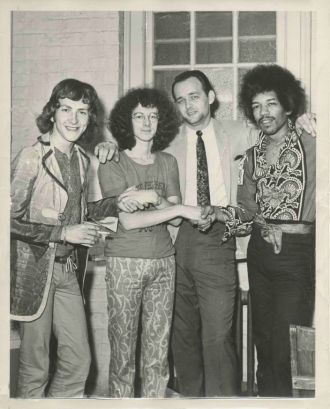
Jimi Hendrix, band, & Ron Gray
Jimi Hendrix with Ron Gray and band members: My father, Ron Gray, was a concert promoter in the 1960's in central to northwest Louisiana (Monroe, Shreveport, etc). Jimi Hendrix played a concert in Shreveport, Louisiana on July 31, 1968. My father, Ron Gray, is standing next to Hendrix. Comments by Gary E. Gray.
People in photo include: Mitch Mitchell, Noel Redding, and Ronald Eugene Gray
People in photo include: Mitch Mitchell, Noel Redding, and Ronald Eugene Gray
People tagged:

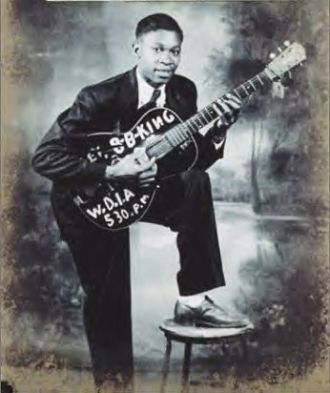
B.B. King, Blues Legend
This is an early photo of Mr Riley B. King (1925 - 2015) described as a blues singer, song writer, and guitarist - but better described as legend.
B.B. King (his stage name) was born in Mississippi on a cotton plantation near the town of Itta Bena. His parents were sharecroppers. His recording career began with his first single in 1949. It took a couple of years for him to catch on, but when he did, a legend was born.
He was married twice and had between 11 and 15 children. At the time of his death, on May 14th, 2015, he was living in Las Vegas.
You could say "the thrill is gone" but his music and his guitar, Luciille, will be with us forever.
Thank you, B.B!
B.B. King (his stage name) was born in Mississippi on a cotton plantation near the town of Itta Bena. His parents were sharecroppers. His recording career began with his first single in 1949. It took a couple of years for him to catch on, but when he did, a legend was born.
He was married twice and had between 11 and 15 children. At the time of his death, on May 14th, 2015, he was living in Las Vegas.
You could say "the thrill is gone" but his music and his guitar, Luciille, will be with us forever.
Thank you, B.B!
People tagged:

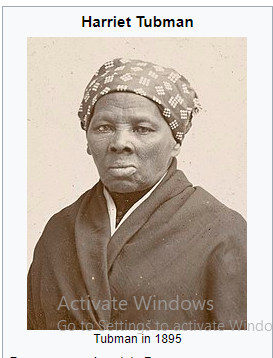
Harriet Tubman, born around 1822 in Dorchester County, Maryland, was an iconic African-American abolitionist and political activist. Renowned for her unwavering commitment to the pursuit of freedom, Tubman played a pivotal role in the Underground Railroad, a secret network of safe houses and escape routes that aided enslaved individuals in their journey to liberation.
Despite being born into the harsh realities of slavery, Tubman's indomitable spirit and determination led her to escape bondage in 1849. However, she refused to rest until her loved ones and countless others were freed from the shackles of slavery as well. Over the course of several daring missions, Tubman became known as the "Moses of her people," guiding and protecting numerous slaves through dangerous territories to the safety of Northern states and Canada.
Beyond her vital work as a conductor on the Underground Railroad, Tubman continued her fight for justice and equality, actively participating in the women's suffrage movement and advocating for civil rights for African Americans. A true symbol of courage, resilience, and selflessness, Harriet Tubman's remarkable legacy continues to inspire generations, reminding us of the power of determination and the fight for freedom.

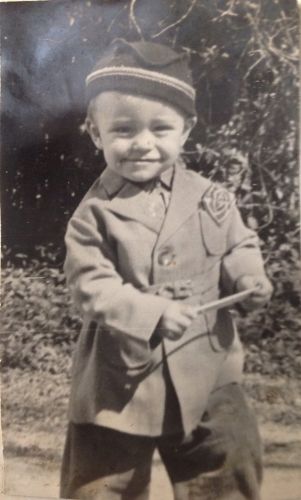
Lost & Found
Help reunite mystery or 'orphan' photos that have lost their families.
Photos with the names and dates lost in history. AncientFaces has been reuniting mystery and orphan photos with their families since we began in 2000.
This 'Lost & Found' collection is of photos foun... 
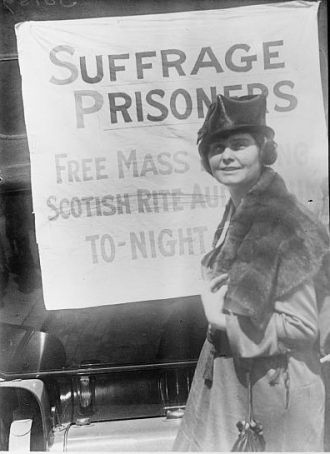
Women's Suffrage
The history of women's struggle for the right to vote.
Well into the 20th century, women in many countries did not have the right to vote. It wasn't until 1920 that women had the right to vote in the United States. This is a visual history of women's str... 
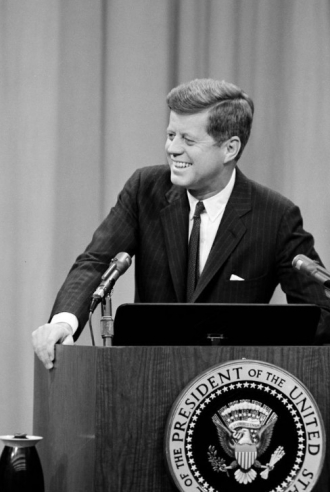
Presidents
U.S. Presidents: their official portraits and other photos showing them as you may not have seen them before.
Technically, John Hanson (who was President of the First Continental Congress) was really the first President of the United States. However, most people call George Washington "the Father of our Coun... 
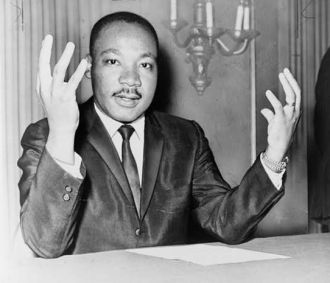
Civil Rights Movement
Images documenting the fight for equality & civil rights in the United States.
Throughout the history of the United States various groups including African-Americans, Native Americans, women, immigrant groups and more have fought for full rights.
The Civil Rights Act of 1964 w... 
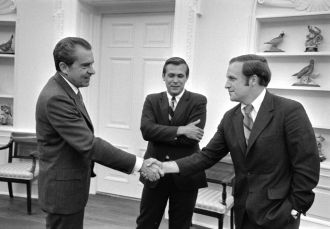
Political
Original photos of the politicians and political events throughout the past few centuries.
Welcome to a collection of photographs that document the fascinating history of politics. From democracies to monarchies, communism to fascism, and everything in between, this page captures the divers... 
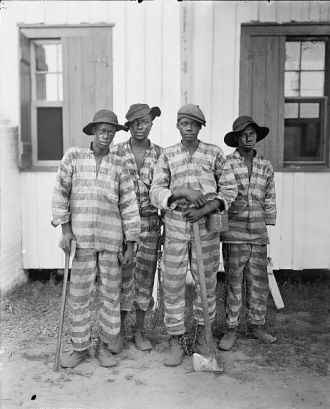
Notorious
The people and places that live on in our memories - not for good reasons but because of how they shocked and saddened.
Images of serial killers, mass murderers, despots and dictators, prisons, and the victims of these horrors. These people & places live on in infamy in our history.
There are the notorious killers: Th... 
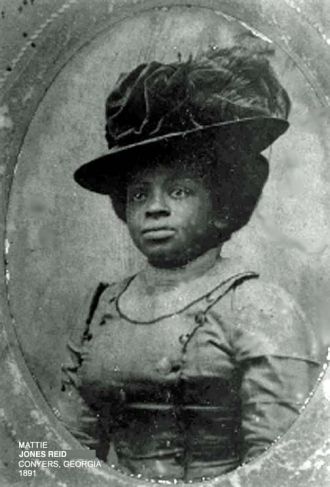
1800s
The 1800s where the end of the industrial revolution and the birth of scientists.
The Industrial Revolution began around 1760 and ran through the 1840's. Then began the birth of the profession of science. Louis Pasteur, Charles Darwin, Michael Faraday, Thomas Edison, and Nikola Te... 
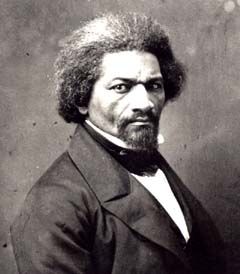
African Americans
See the faces of just some of the many African Americans who have contributed to building the United States into the country it is today.
African Americans in the early history of the United States had an extremely difficult start as immigrants. Having been primarily forced to immigrate to a new continent, African Americans worked throu... 
